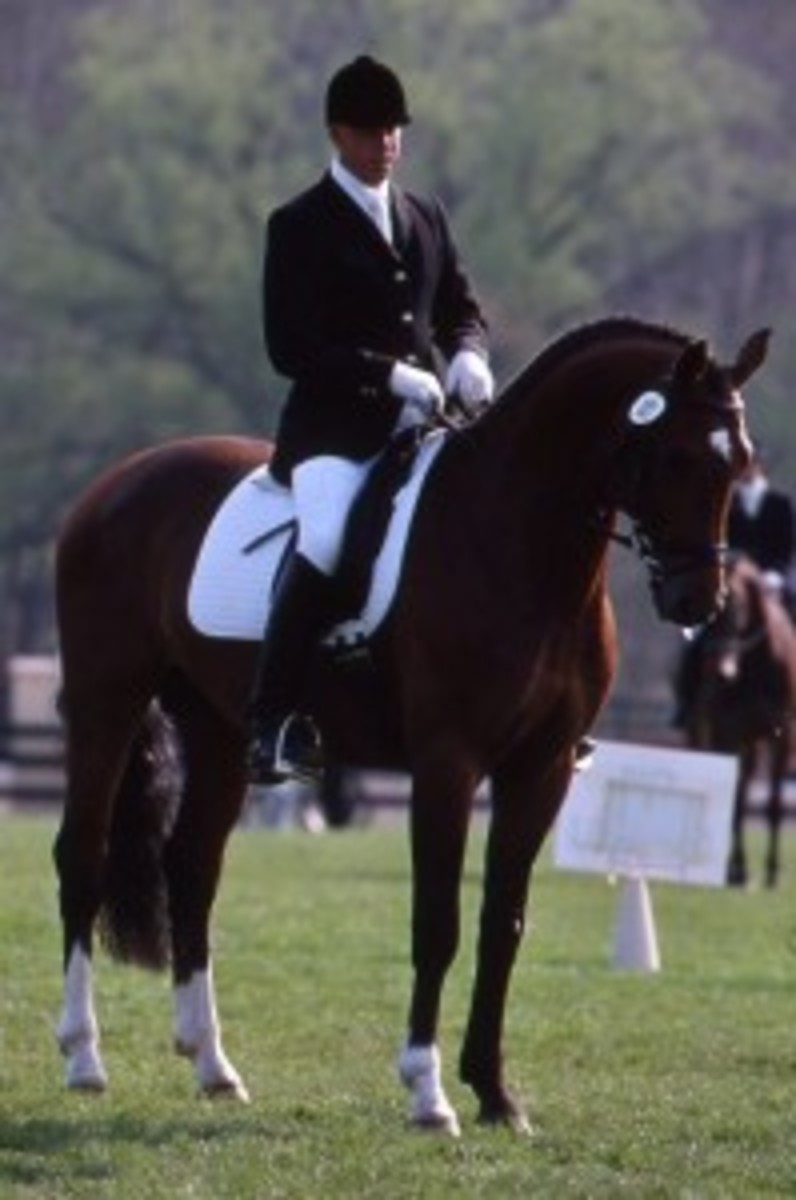
A key to success is to gain control over the elements that are within your reach regardless of the type of horse you ride or at what level you are competing. One paramount element that you can focus on is the accuracy with which you ride. Riding accurately can win the class and prove your talent as a rider. Many people feel that the quality of horse is the most important element, but that is not always the case. Up to and including Prix St. Georges, the marks are weighted to the technical side. This need for technical precision affects your coefficients and resulting score. Therefore, accuracy is an element in your control for a competitive edge. Here are three tactics within your control to help you grasp that competitive advantage.
Learn from Showing Last Year
Your coach helped to get you to the ring last summer, and the judges have evaluated your performance. The judges’ job was to determine why the movement was not a 10. But, it’s not over. Now it is your job to gather up your test sheets and sit down at your desk. You and your coach already know where your trouble areas are, however, you now need to be looking for marks that you have given away. For example, the Prix St. Georges test has a total of 400 possible marks and 27 movements. Therefore, each mark represents one-fourth of a percentage point; in other words, four marks equals one percent. Thereby, you could win or lose the class with just the size of your voltes alone! Try to develop the skill of reviewing your test in this light at your desk, and then you will see how you should ride fighting to hold on to marks instead of throwing them away. This is a winner’s strategy.
Ride Daily with a Show Training-Purpose in Mind
At home, after warm-up, your riding should have a show-training purpose, working toward technical correctness in all shapes, movements and transitions. This means, for instance, square halts, hitting four points of a circle, setting a predetermined point of transitions, correct number of steps in the rein back, simple changes or pirouettes. Pay close attention to these details. This is not about repeating tricks or mistakes until you get them right, but rather it’s the same methodical mindset that is required when reviewing your tests. As you run through tiny portions of your test, as soon as you lose any qualities, circle and reestablish the correct way of going, then from that same circle resume the same line that you were working on. Repeat this method to avoid tension and anticipation.
Know and Strategize Your Test
A further aspect of the test-riding situation that you have complete control over is the memorization of the test itself and the resulting strategy. Even if you are able to have the test read to you, the movements should just happen. It has been proven that active involvement in the learning process leads to better retention of the material at hand. So try walking out the test and diagramming it on paper. Strategizing the test involves anticipating what to expect from the judges by knowing the directives for the level. It may also involve being systematically assertive or conservative during your test.
Thus plan ahead; if you know your horse falls on his forehand while going for too much medium trot, it could cause you to lose marks on your next movement trying to get the horse back. For example, if you go for a 7 in the medium trot and fall on the forehand, ending up with a 5, then you probably get, at best, a 5 on the next movement while trying to get your horse back. Ridden with a plan, such as a more conservative medium trot and perhaps a stronger next movement, you could get at least three more marks resulting in more than 0.5 percent on your final score. Consider the entire test in this light, and your final score will be higher.
The ability to create this accurate test will not only raise the individual marks of the test, but also the overall collective marks will be affected in your favor.
Submission and rider’s position both will be positively correlated because of an improved level of technical riding that has been quietly perfected at home under the discipline of accuracy. Just like the training stages give your horse a foundation, this type of control will give you confidence that you can start building on to ask more of your horse, such as position and engagement. This then becomes your personal competitive edge.
Jon Costin is a U.S. Dressage Federation gold medalist, twice a Canadian League World Cup Finalist and has listed eight different horses with the Canadian Equestrian Team. Training with Canada’s Neil and Cindy Ishoy, he owns Jon Costin Dressage Inc., a training barn outside Toronto.











